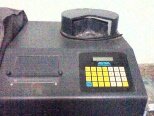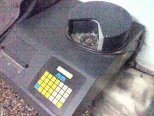Used ASOMA 200 ED–XRF #60499 for sale
URL successfully copied!
Tap to zoom
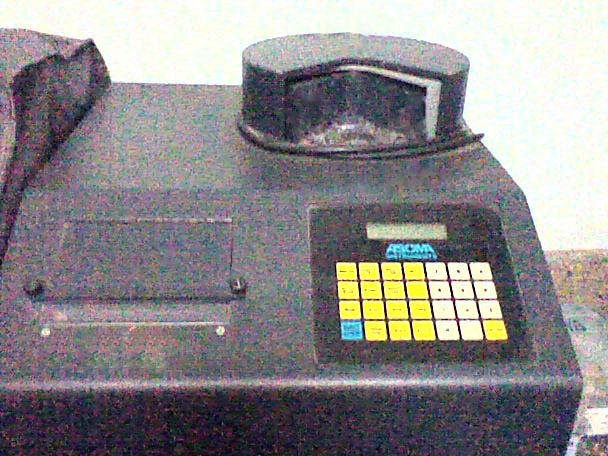

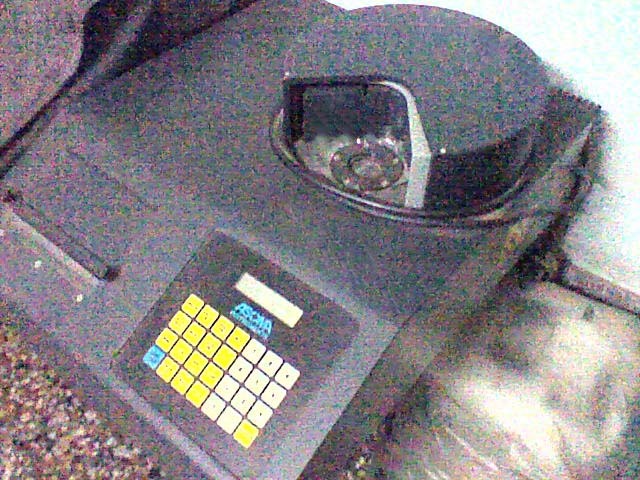

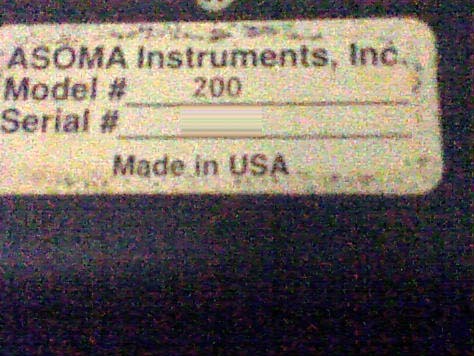

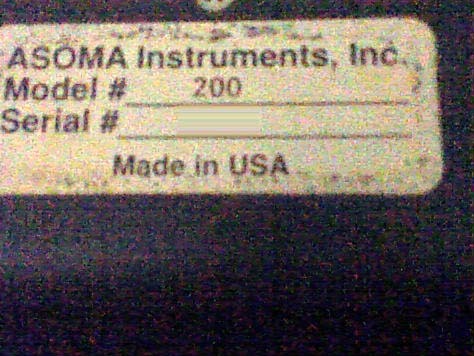

ID: 60499
Vintage: 1996
Portable analyzer
Operates: Battery or 110/220 VAC
Analyzes: Up to 6 elements
Calibrated for cassetterite ore (Tin ore)
For constituents Sn, Nb, Ta, Fe
Analysis cassetterite ore
Source type: Radioisotope AM 241
Accuracy: Up to 10 ppm
Typical analysis time / sample: 10-100 Seconds
Analytic range: Aluminum (Atomic number 13) to uranium (Atomic number 92)
Includes:
Casseterite ores
Standard samples
Sample cups
Currently stored in a cleanroom
1996 vintage.
ASOMA 200 ED-XRF (Energy Dispersive X-Ray Fluorescence) spectrometer is a high-performance analytical instrument designed for accurate and reliable measurements of elemental composition. It is capable of a wide variety of sample types including liquids, solids, films, and coatings. The spectrometer is equipped with the latest solid state detectors and electronics, allowing for fast and efficient data acquisition. The ED-XRF instrument is composed of four main parts: an X-ray source, a detector, an electronics board, and a vacuum chamber. The X-ray source is an X-ray tube which provides an emission of X-rays in a very specific energy range. The source is mounted on a lead housing that absorbs unwanted higher-energy X-ray photons. The type of X-ray source used is dependent on the application, for example, for measuring the depth profile of an unknown material the excitation energy is provided by a Cr X-ray tube, and for element concentrations the energy is usually provided by an Mo X-ray tube. The X-ray pphotons produced by the X-ray tube are directed into the sample. As the photons interact with the sample, some of the energy is absorbed and the remaining photons are re-emitted in a characteristic pattern. This phenomenon, referred to as fluorescence, is the main principle of operation of the ED-XRF spectrometer. The characteristics of the fluorescence emitted from the sample can then be measured using a detector. The detector commonly used for ED-XRF is an energy-dispersive silicon detector which is composed of two parts: a detector crystal and a positioning arm. The detector crystal is made of either Ge or Si, and is mounted to the arm. The position of the detector crystal can be adjusted in order to change the amount of X-ray photons that enter the detector, thus allowing the user to optimize the measurement according to the application. The detector crystal is connected to the electronics board via an amplifier. The electronics board is responsible for amplifying and processing the signal from the detector, thus allowing the measurement of the spectral characteristics of the X-rays emitted from the sample. Finally, the ED-XRF instrument is contained within a vacuum chamber. This is necessary in order to reduce the number of high-energy photons, since the higher energy photons have a more difficult time penetrating the vacuum. This ensures that the X-ray photons from the source will interact with the sample, and the instrument's measurements will be accurate and reliable. ASOMA 200 ED-XRF spectrometer is a high-performance analytical instrument that is capable of making accurate and reliable measurements of elemental composition in various applications. It employs the latest developments in X-ray source, detector, and electronics technology, allowing for fast and efficient data acquisition.
There are no reviews yet
